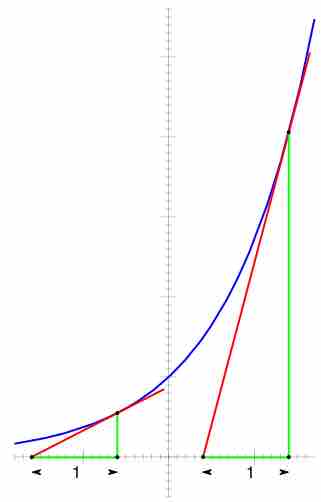Concept
Version 8
Created by Boundless
Derivatives of Exponential Functions

Graph of an Exponential Function
Graph of the exponential function illustrating that its derivative is equal to the value of the function. From any point
Source
Boundless vets and curates high-quality, openly licensed content from around the Internet. This particular resource used the following sources: